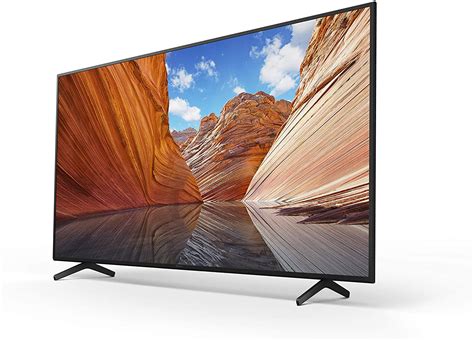In this digital age, technology is constantly evolving, and one of the most significant advancements in the world of entertainment is the advent of Smart TVs. Gone are the days when our televisions were merely a box with limited channels. Smart TVs have taken center stage, offering a world of possibilities and connectivity. In this comprehensive article, we will delve into the fascinating realm of Smart TVs, discussing their features, benefits, and whether you truly need one in your life.
Understanding Smart LED TVs
The Evolution of Televisions
The journey of televisions from bulky CRT sets to sleek Smart LED TVs is a remarkable one. It all began with the invention of the cathode-ray tube (CRT) television in the early 20th century. These television sets were large, heavy, and had limited screen sizes. However, they marked the beginning of a new era in home entertainment.
Over the years, televisions underwent a remarkable transformation. The advent of flat-screen LCD and plasma TVs made them more aesthetically pleasing and space-efficient. But the real game-changer was the introduction of Smart LED TVs. These TVs combine the sleek design of flat screens with advanced technology, bringing a host of features to your fingertips.
What Sets Smart TVs Apart?
Smart TVs are not your ordinary televisions; they are essentially a hybrid between a TV and a computer. What sets them apart are the built-in features and capabilities that enhance your entertainment experience. Here are some key elements that make Smart TVs stand out:
Internet Connectivity: Smart TVs can connect to the internet, allowing you to access a wide range of online content, from streaming services like Netflix and Amazon Prime to social media platforms like YouTube and Facebook.
App Integration: Just like your smartphone, Smart TVs have an app ecosystem. You can download and install apps to customize your TV’s functionality. Whether you want to play games, check the weather, or order food, there’s likely an app for it.
Voice Control: Many Smart TVs come with voice recognition technology. You can control your TV, search for content, and even adjust settings using voice commands. It’s like having a virtual assistant right in your living room.
Screen Mirroring: With screen mirroring capabilities, you can easily share content from your smartphone, tablet, or laptop directly onto your TV screen. This feature is particularly handy for presentations, photo sharing, or watching user-generated content.
Multiple Ports: Smart TVs are equipped with various input and output ports, including HDMI, USB, and Ethernet. This versatility allows you to connect a wide range of devices such as gaming consoles, soundbars, and Blu-ray players.
Android LED TV Price in Pakistan
If you’re considering purchasing a Smart LED TV in Pakistan, one crucial factor to keep in mind is the price. The price of Android LED TVs in Pakistan can vary significantly depending on the brand, screen size, and features. Here’s a brief overview of the price range you can expect:
Budget-Friendly Options: You can find smaller Smart LED TVs in the 32 to 40-inch range from reputable brands at affordable prices, often starting at around PKR 30,000 to PKR 40,000.
Mid-Range Models: Smart LED TVs with larger screens (43 to 55 inches) and more advanced features fall into the mid-range category, typically ranging from PKR 50,000 to PKR 100,000.
High-End Choices: For those seeking the best of the best, high-end Smart LED TVs from premium brands, often boasting 4K Ultra HD resolution and cutting-edge technology, can go well beyond PKR 100,000.
It’s essential to assess your budget and requirements when choosing a Smart LED TV in Pakistan. Consider factors such as screen size, picture quality, and additional features to make an informed decision.
Why Size Matters
When it comes to choosing the right Smart TV, size does matter. The screen size of your TV can significantly impact your viewing experience. However, bigger isn’t always better, and the ideal size depends on your room size and personal preferences.
Small to Medium Rooms: For small to medium-sized rooms, a Smart LED TV with a screen size between 32 and 55 inches is usually sufficient. It provides a clear and immersive viewing experience without overwhelming the space.
Large Rooms and Home Theaters: In larger rooms or dedicated home theaters, you might consider larger screen sizes, such as 65 inches or more. These larger TVs can replicate the cinematic experience and are perfect for movie enthusiasts.
Viewing Distance: To determine the ideal screen size, consider your viewing distance. A general rule of thumb is that your TV’s screen diagonal should be approximately 1/3 to 1/2 the viewing distance. For example, if your couch is 8 feet away from the TV, a 40 to 48-inch TV would be suitable.
Connectivity at Its Best
One of the standout features of Smart LED TVs is their connectivity options. These TVs offer a wide array of ports and wireless connectivity methods, ensuring that you can connect virtually any device to your TV. Here are some of the connectivity options you can expect:
HDMI Ports: HDMI (High-Definition Multimedia Interface) ports are essential for connecting devices like gaming consoles, Blu-ray players, soundbars, and laptops to your Smart TV. Most Smart TVs come with multiple HDMI ports, making it easy to switch between devices.
USB Ports: USB ports are handy for playing media files from external USB drives or connecting accessories like keyboards and mice. You can also use USB ports for firmware updates.
Ethernet Port: While Smart TVs can connect wirelessly to the internet, they often include an Ethernet port for a wired connection. This can be useful for more stable and high-speed internet access.
Wi-Fi and Bluetooth: Smart TVs are equipped with built-in Wi-Fi for wireless internet connectivity. Additionally, Bluetooth technology allows you to connect wireless headphones, keyboards, and other peripherals.
Screen Mirroring: Many Smart TVs support screen mirroring or casting, allowing you to mirror your smartphone or laptop screen on the TV. This feature is ideal for sharing photos, videos, and presentations.
The extensive connectivity options of Smart LED TVs make them versatile hubs for all your entertainment and productivity needs.
Benefits of Having a Smart LED TV
Access to Streaming Services
One of the most significant advantages of owning a Smart TV is easy access to streaming services. With a Smart LED TV, you can watch your favorite movies, TV shows, and documentaries on popular platforms like Netflix, Amazon Prime Video, Hulu, Disney+, and more. These platforms offer a vast library of content, including exclusive shows and movies, allowing you to customize your entertainment experience to your liking.
Internet Browsing on Your TV
Imagine having the power of the internet at your fingertips while sitting on your couch. Smart TVs come with web browsers that enable you to surf the web directly on your TV screen. This feature is particularly convenient when you want to look up information, shop online, or browse social media without switching to a computer or smartphone.
Gaming on the Big Screen
If you’re a gaming enthusiast, a Smart LED TV can take your gaming experience to the next level. Many Smart TVs are compatible with gaming consoles like PlayStation, Xbox, and Nintendo Switch. You can immerse yourself in your favorite games on a larger-than-life screen, complete with high-quality graphics and sound. Some Smart TVs also offer gaming modes that reduce input lag, enhancing your gaming performance.
Smart LED TV Price in Pakistan
As mentioned earlier, the price of Smart LED TVs in Pakistan varies based on several factors. While high-end models can be expensive, it’s important to consider the value they offer. Here are some additional aspects to keep in mind:
Long-Term Investment: A Smart LED TV is not just a purchase; it’s an investment in your home entertainment. Consider the durability and lifespan of the TV when assessing its price.
Energy Efficiency: Many Smart TVs are designed to be energy-efficient, which can lead to long-term cost savings on your electricity bills.
Warranty and Customer Support: Check the warranty and after-sales customer support provided by the manufacturer or retailer. A good warranty can provide peace of mind.
Additional Features: Evaluate the additional features offered by the TV, such as built-in sound systems, picture quality, and compatibility with other devices.
In the end, the price you pay for a Smart LED TV should align with your budget and the features and benefits you desire.
Voice Control and Smart Assistants
One of the standout features of Smart TVs is voice control. Many modern Smart TVs come equipped with built-in microphones and voice recognition technology. This allows you to control your TV, search for content, adjust settings, and even ask questions using voice commands. It’s like having a personal assistant right in your living room. Whether you want to change the channel, find a specific movie, or check the weather, you can simply speak to your TV, and it will respond.
Do You Really Need a Smart TV?
Assessing Your Entertainment Needs
Now that we’ve explored the various features and benefits of Smart LED TVs, the question remains: Do you really need one? The answer depends on your entertainment preferences and lifestyle. Here are some factors to consider:
Streaming Habits: If you’re a regular consumer of streaming services and enjoy binge-watching TV shows and movies, a Smart TV can make your experience more seamless and enjoyable.
Internet Usage: Do you frequently browse the internet, use social media, or shop online? If so, the convenience of web browsing on a Smart TV may be a valuable addition to your home.
Gaming Enthusiasm: Gamers who appreciate larger screens, immersive graphics, and reduced input lag will find a Smart LED TV to be a worthwhile investment.
Future-Proofing: Consider how a Smart TV aligns with your future needs. As technology continues to advance, having a Smart TV can ensure that you stay up-to-date with the latest entertainment trends.
Future-Proofing Your Home
The world of technology evolves rapidly, and future-proofing your home is a smart move. Smart LED TVs are designed to adapt to changing technology and content delivery methods. They receive software updates that add new features and improve performance, ensuring that your TV remains relevant for years to come. Additionally, Smart TVs are compatible with emerging technologies like 8K resolution and virtual reality, making them a versatile addition to your home.
Smart TVs vs. Conventional TVs
To make an informed decision, it’s essential to compare Smart TVs to conventional TVs. Conventional TVs, also known as non-smart or standard TVs, have been around for decades. They offer basic functionality, such as channel tuning, volume control, and input selection. Here’s a comparison between the two:
Conventional TVs
- Limited functionality and connectivity options.
- Require additional devices like streaming sticks or boxes for accessing online content.
- May not receive software updates or new features.
- Typically lower in price compared to Smart TVs.
Smart TVs
- Advanced features and connectivity options are built-in.
- Direct access to streaming services and internet browsing.
- Regular software updates for enhanced functionality.
- Higher initial investment but offers a wide range of capabilities.
Investing in Quality
When considering a Smart LED TV, think of it as a long-term investment. Quality should be a top priority, as a well-made Smart TV can provide years of entertainment enjoyment. Here are some tips for investing in a high-quality Smart TV:
Research Brands: Look for reputable TV brands known for their quality, customer support, and reliability. Brands like Samsung, LG, Sony, and Panasonic are often reliable choices.
Compare Models: Within a brand, there are usually multiple models with varying features and price points. Compare the specifications and read reviews to find the best fit for your needs.
Check Display Technology: Consider the type of display technology the TV uses, such as OLED, QLED, or LED. Each has its advantages, so choose based on your preferences.
Sound Quality: Don’t forget about sound. If you’re particular about audio quality, look for a TV with built-in Dolby Atmos or DTS:X support, or invest in a soundbar for an enhanced audio experience.
Making the Right Decision
Evaluating Your Budget
Your budget plays a significant role in determining the Smart TV you can afford. While it’s tempting to go for the latest and greatest model, it’s essential to find a TV that aligns with your financial situation. Here are some budget considerations:
Affordable Options: If you’re on a tight budget, there are plenty of affordable Smart TVs available that provide excellent value for your money. Look for smaller screen sizes or mid-range brands to save on costs.
Mid-Range Choices: For a balance between price and features, mid-range Smart TVs offer a wide selection. You can find options with larger screens and decent performance without breaking the bank.
High-End Selections: If budget is not a concern, high-end Smart TVs from top-tier brands offer the best in terms of picture quality, features, and design. These TVs are ideal for those who prioritize premium quality.
Researching Brands and Models
Choosing the right brand and model is crucial when buying a Smart LED TV. Start by researching the top brands in the market and their reputation for quality and innovation. Here’s a brief overview of some reputable TV brands:
Samsung: Known for its cutting-edge technology and sleek designs, Samsung offers a wide range of Smart TVs catering to different budgets and preferences.
LG: LG is renowned for its OLED TVs, which are known for their exceptional picture quality and deep blacks. They also offer a variety of LED models with innovative features.
Sony: Sony is a trusted name in the electronics industry, known for its high-quality displays and sound systems. Their Bravia series of Smart TVs is well-regarded.
Panasonic: Panasonic Smart TVs are appreciated for their reliability and longevity. They often offer good value for the price.
Once you’ve narrowed down the brands, delve into the specific models that match your requirements. Look at factors like screen size, resolution, and additional features. Reading user reviews and expert opinions can provide valuable insights into the performance and durability of a particular TV model.
Setup and Installation
Setting up your Smart TV correctly is essential to ensure optimal performance. Follow these steps for a smooth setup process:
Unboxing: Carefully unbox your Smart TV and remove all packaging materials. Ensure that all accessories, such as the remote control and power cables, are included.
Placement: Choose the ideal location for your TV, taking into account factors like viewing angle, sunlight, and proximity to power outlets and internet connections.
Connection: Connect your Smart TV to a power source and the internet using either Wi-Fi or an Ethernet cable. Follow the on-screen prompts to complete the initial setup.
Software Updates: Check for and install any available software updates to ensure that your TV has the latest features and security patches.
App Installation: Browse the app store on your Smart TV and install the apps you want to use, such as streaming services and games.
Calibration: To optimize picture and sound quality, you may want to calibrate your TV. You can do this manually or use calibration tools available online.
Accessories and Add-Ons
Enhance your Smart TV experience by considering the following accessories and add-ons:
Soundbars: While many Smart TVs come with built-in speakers, a dedicated soundbar can greatly improve audio quality, delivering a more immersive sound experience.
Universal Remote: A universal remote control can simplify your entertainment setup by allowing you to control multiple devices with a single remote.
Gaming Accessories: If you’re into gaming, invest in gaming accessories like a wireless controller or a gaming keyboard and mouse for a more enjoyable experience.
Wall Mount: Mounting your Smart TV on the wall can save space and create a sleek, modern look in your living room. Be sure to follow proper installation guidelines.
Cable Management: Consider cable organizers or covers to keep your TV area tidy and free from clutter.
Conclusion
In conclusion, Smart LED TVs have revolutionized the way we consume entertainment. With their myriad features, they offer convenience, connectivity, and an immersive viewing experience. Whether you need one depends on your preferences and budget, but the future certainly seems to be pointing towards Smart TVs being the norm.





